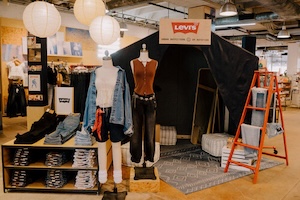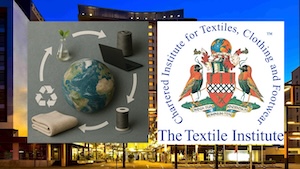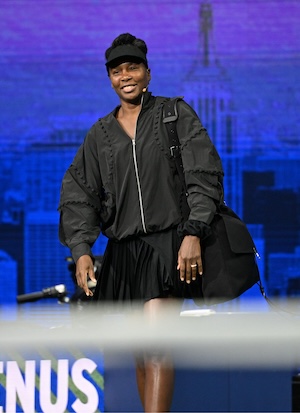
Ultrafabrics, New York City, has named Caroline Ollivier senior director of Trade Marketing.
England-based textile manufacturer Think Group named Rachel Douglas Phillips Technical and Sustainability manager. She will lead the development of new products in collaboration with customers as well as guide businesses on sustainability within the nonwoven industry.

Standard Textile Co. Inc., Cincinnati, has appointed Frank Kerley vice president of its Textile Division. He will oversee strategic direction, growth initiatives and operational performance across the Healthcare and Hospitality textile markets.
Germany-based KARL MAYER recently appointed Hagen Lotzmann managing director and president of the Karl Mayer Technical Textiles business unit. In other company news, Axel Wintermeyer was named president of Karl Mayer’s Warp Knitting business.
Scott Blackadar has joined South Korea-based Hyosung as Personal Healthcare Global leader. Based In Philadelphia and working from the Hyosung’s Charlotte, N.C., office he will manage the company’s global sales team promoting Hyosung’s specialty fibers in the healthcare market.

Dr. Eric Evans was named the Board of Directors chair for the Advanced Functional Fabrics of America (AFFOA), Cambridge, Mass.
Atlanta-based brrr° has announced two new appointments. Christopher Heyn transitioned from executive chairman to CEO; and David Ludd has joined the company as vice president of Sales and Marketing.

Catherine Roebuck has joined England-based dyeing, printing and Roebuck finishing
company Pincroft as Business Development manager. She will focus on supporting the company’s growing military and defense portfolio, as well as expanding its wide com-mission finishing services.
Jen Hanna has joined Carbitex, Kennewick, Wash., as vice president of U.S. sales.
Paris-based Lectra has promoted Maximilien Abadie to deputy CEO responsible for Lectra’s software as a service (SaaS) activities.

Geneva-based Better Cotton has announced Nick Weatherill as CEO. He will work with outgoing CEO Alan McClay to ensure a smooth leadership transition.
Herculite Products Inc., Emigsville, Pa., has promoted Mike Stephenson to director of Manufacturing.
Toronto-based Cobmex Apparel Inc., a provider of high-performance knitwear for the uniform industry, has named Jon Edberg president and COO. He succeeds Founder and President Phil Newman who will assume the role of CEO.
Fire-Dex, Medina, Ohio, has named Ben Pfahl chief information officer.

AATCC ColorLab Dedicated To Roland L. Connelly Sr.
The American Association of Chemists and Colorists (AATCC), Durham, N.C., recently dedicated its newly refurbished ColorLab to Roland L. Connelly Sr. He had a more than 40-year career in the textile industry focused on all aspects of color management and control beginning working at Burlington Industries, X-Rite Inc. and GretagMacbeth, as well as owning several of his own companies. During his career, Connelly was very involved with AATCC.
He held leadership roles including president, he was chair of the RA36 Color Measurement Committee, and a member of AATCC’s board of directors. He was honored with the AATCC Chapin Service Award, played a significant role in the AATCC Foundation, and was instrumental in developing workshops and several AATCC standards.
AATCC held a dedication ceremony where Connelly was honored in the presence of some of his family members and close friends. He owned a personal spectrophotometer that was generously donated to the AATCC lab by his wife Lynn.
2025 Quarterly Issue III


















